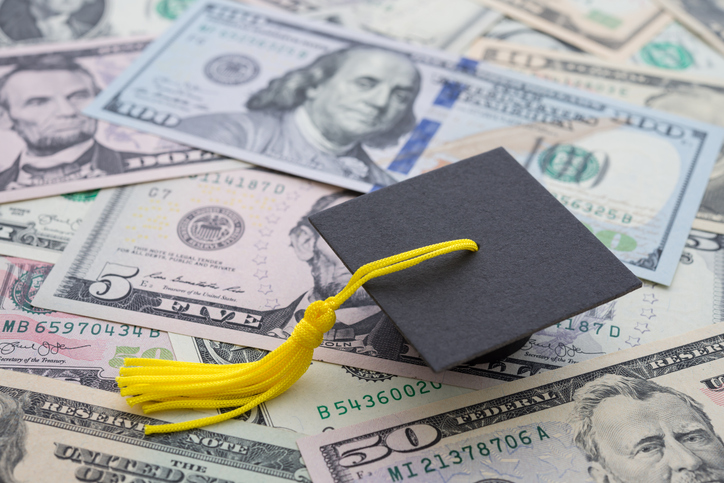The One Big Beautiful Bill Act proposes significant changes to federal student loan programs that could impact millions of educational borrowers. Most impacts will be felt in 2026, but some will start in 2025. Key changes include eliminating subsidized loans for undergraduates and ending PLUS loans for graduate students and parents. The law also imposes stricter limits on deferment and forbearance and redefines eligibility for loan forgiveness programs. On the plus side, borrowers who have defaulted will get an extra chance to rehabilitate their loans.
A financial advisor can help you make sense of the new rules, explore alternative funding options, and create a personalized repayment strategy that fits your financial goals.
Key Takeaways
- Subsidized and PLUS loans end in 2026: The bill eliminates subsidized loans for undergraduates and ends new Graduate PLUS Loans starting July 1, 2026. Parent PLUS Loans are still available but only if unsubsidized aid doesn’t cover full costs.
- Deferment and forbearance tighten in 2025: New loans issued on or after July 1, 2025, are not eligible for deferment due to economic hardship or unemployment. Forbearance is capped at nine months within any two-year period.
- Loan forgiveness and default rules change: A new repayment plan will count toward PSLF. Medical and dental residency no longer qualifies for PSLF unless the loan was disbursed before June 30, 2025. Borrowers also gain a second opportunity for loan rehabilitation if they haven’t already used it after July 1, 2025.
Key Changes in the Trump Student Loan Plan
The One Big Beautiful Bill Act proposes fundamental changes to how student loans are issued, managed and forgiven. Here’s a roundup of four main changes.
End of Subsidized and PLUS Loans
One of the most significant provisions in the Trump student loan plan is the elimination of subsidized loans for undergraduates and PLUS loans for graduate students and parents. These loans currently offer benefits such as interest-free periods and borrowing flexibility.
Starting July 1, 2026, students would need to rely solely on unsubsidized loans and private options, potentially increasing their long-term interest costs and repayment burdens.
Parents would still be able to take out PLUS loans, but only if unsubsidized loans don’t cover the student’s full cost of attendance. This change could lead many families to seek alternative financing methods and may also reduce college enrollment altogether.
Tightened Rules on Deferment and Forbearance
Under the new student loan plan, deferments for unemployment or economic hardship will no longer be available for new loans issued after July 1, 2025. Additionally, forbearance periods, which allow borrowers to temporarily pause payments, will be capped at nine months within any two-year window.
These changes place greater responsibility on borrowers to maintain consistent payments, even during financial instability. Medical and dental residents can still qualify for interest-free forbearance during up to four years of training.
Loan Rehabilitation Gets a Boost
For those who fall into default, the new student loan plan allows a second chance at loan rehabilitation, up from the current one-time limit. New loans will also have a minimum monthly payment of $10 during rehabilitation.
Public Service Loan Forgiveness (PSLF) Adjustments
Borrowers pursuing Public Service Loan Forgiveness (PSLF) should also be aware of a key modification: The Trump student loan plan allows new repayment plans to count toward PSLF.
However, medical and dental internships will no longer qualify as public service unless loans were taken out before June 30, 2025. This could disqualify many future health professionals from earning forgiveness through PSLF.
The table below rounds up major changes for borrower under Trump’s new student loan plan.
| Provision | Current Rule | New Rule Under the Bill | Effective Date |
|---|---|---|---|
| Subsidized Loans | Available to undergraduates | Eliminated for new undergraduate loans | July 1, 2026 |
| Graduate PLUS Loans | Available to graduate students | Eliminated | July 1, 2026 |
| Parent PLUS Loans | Available regardless of unsubsidized loan status | Allowed only if unsubsidized loans don’t cover the full cost of attendance | July 1, 2026 |
| Deferment (Unemployment/Economic Hardship) | Available for eligible federal loan borrowers | No longer available for new loans | July 1, 2025 |
| Forbearance Limit | No time limit on general forbearance | Capped at 9 months within any 24-month period | July 1, 2025 |
| Loan Rehabilitation | One lifetime opportunity to rehabilitate | Borrowers get a second chance if no prior rehab after July 1, 2025 | July 1, 2025 |
| Medical/Dental Residency PSLF | Qualifies as public service employment | Qualifies only for loans disbursed before June 30, 2025 | June 30, 2025 cutoff |
| Repayment Plan & PSLF | Limited repayment plans qualify for PSLF | New “Repayment Assistance Plan” (RAP) will count toward PSLF eligibility | July 1, 2025 |
How to Prepare Financially for These Changes

Whether you’re a student, parent or recent graduate, taking proactive steps can help you stay ahead of these proposed changes.
Start by building an emergency fund to cover at least three to six months of expenses. This financial cushion can reduce the risk of default if deferment or forbearance options become limited.
Then, you could create a loan repayment budget based on realistic post-graduation income expectations. Online tools or a financial advisor can help you estimate monthly payments under different scenarios.
If you’re still choosing a degree or career path, it might help to evaluate the return on investment (ROI) of your education. Consider selecting programs that lead to stable, well-paying jobs, and attending community colleges or in-state universities to reduce debt loads.
Students and their families will also likely apply for more state and institutional assistance, including student loans, scholarships and grants. Private scholarships and grants issued by non-profit organizations and companies may also help fill shortfalls created by changes to federal educational borrowing programs.
Finally, reassess your financial aid plan by mid-2025 to account for the removal of subsidized loans and changes to PLUS loan eligibility. A financial advisor can help you compare options, apply for scholarships and structure your loans for long-term success.
Frequently Asked Questions About the Trump Student Loan Plan
Can I Still Get Student Loan Forgiveness Under PSLF?
Yes, but the Trump student loan plan changes what types of payments qualify. Borrowers using the new “Repayment Assistance Plan” can still count their payments toward PSLF. However, medical and dental residencies will only qualify if loans were taken out before June 30, 2025.
Are Current Loans Affected?
Most changes apply only to new loans issued on or after July 1, 2025 (for deferment and repayment changes) and July 1, 2026 (for loan eligibility). Existing loans will largely retain their current terms.
Could These Changes Be Reversed Under a Different Administration?
Possibly. Any future administration could propose its own student loan reforms or reverse elements of the Trump student loan plan through new legislation or executive action.
What Happens If I Lose Access to Subsidized Loans?
You’ll need to rely on unsubsidized loans or other forms of aid. This means interest will start accruing immediately, even while you’re still in school.
Are Parent and Graduate PLUS Loans Going Away Completely?
Not entirely. Parents can still take out PLUS loans if unsubsidized loans don’t fully cover tuition, but graduate students will lose direct access to PLUS loans after July 1, 2026.
What Can I Do If I’m Still in School When These Changes Take Effect?
It’s probably a good idea to review your borrowing strategy each academic year. You could choose to front-load subsidized loans before they’re phased out or explore private loan alternatives. Consider speaking with a financial advisor to build a transition plan.
Bottom Line

The Trump student loan plan introduces a significant shift in how the federal government supports student borrowers. By ending subsidized loans, limiting deferment options and tightening forgiveness rules, the plan places more financial responsibility on borrowers and their families. If you’re planning to take out student loans or already managing repayment, it’s important to know how these changes may affect your finances.
Financial Planning Tips
- A financial advisor can help you compare loan options, plan repayment strategies and adjust your budget based on upcoming student loan changes. Finding a financial advisor doesn’t have to be hard. SmartAsset’s free tool matches you with vetted financial advisors who serve your area, and you can have a free introductory call with your advisor matches to decide which one you feel is right for you. If you’re ready to find an advisor who can help you achieve your financial goals, get started now.
- If you want to know how much your student loan payments could be, SmartAsset’s student loan payment calculator can help you estimate your monthly cost and see how your balance will be paid off over time.
Photo credit: ©iStock.com/Pla2na, ©iStock.com/Jacob Wackerhausen, ©iStock.com/fizkes
